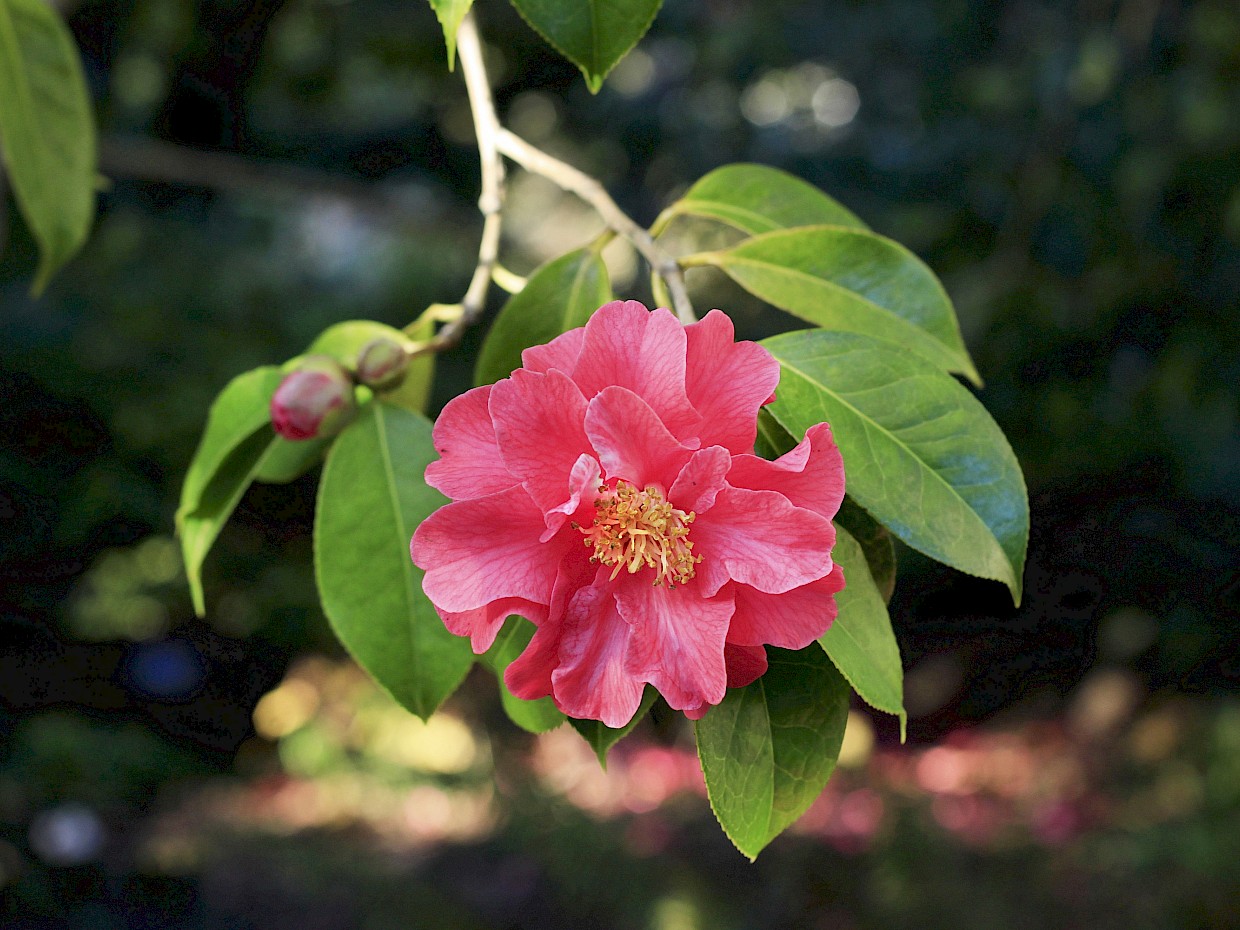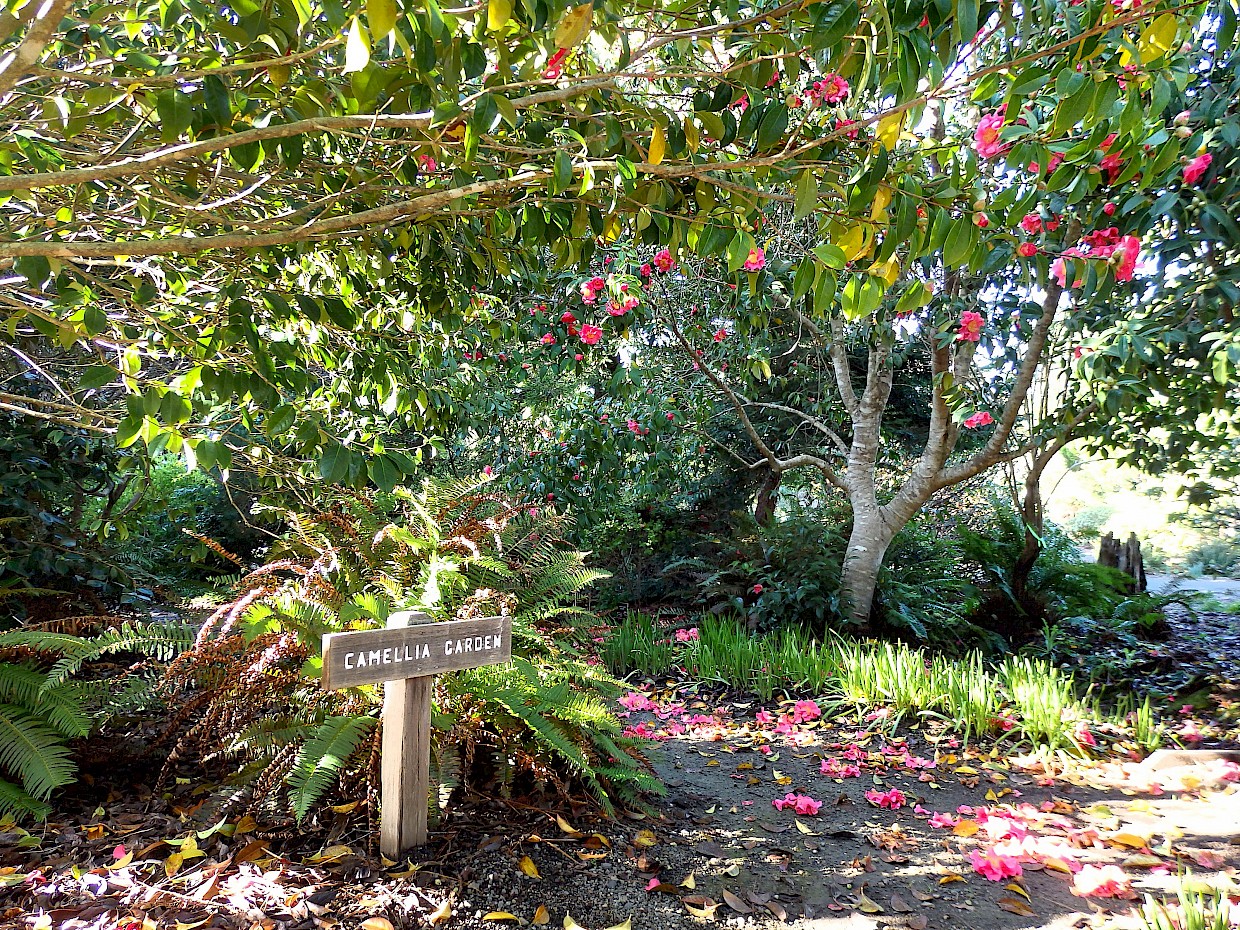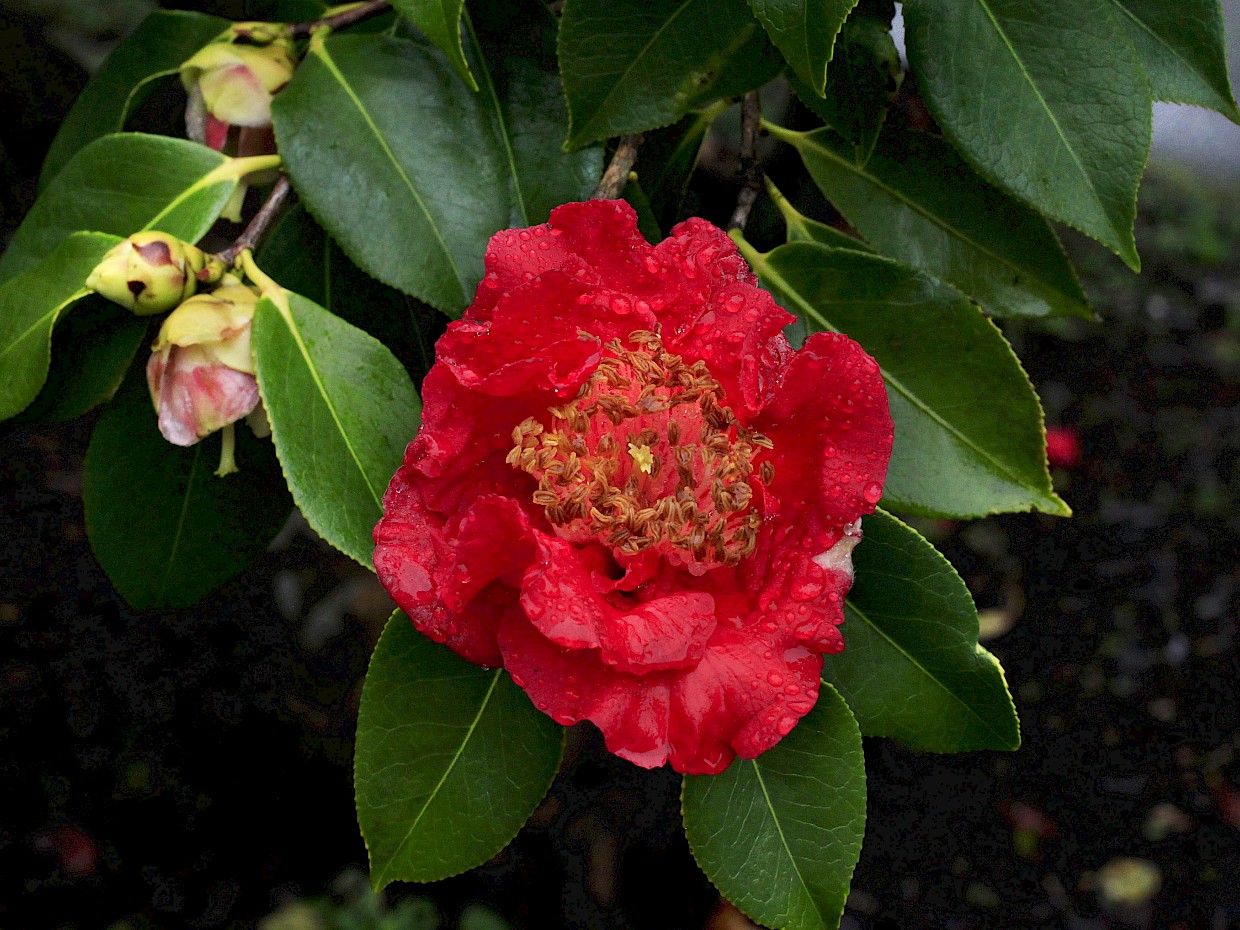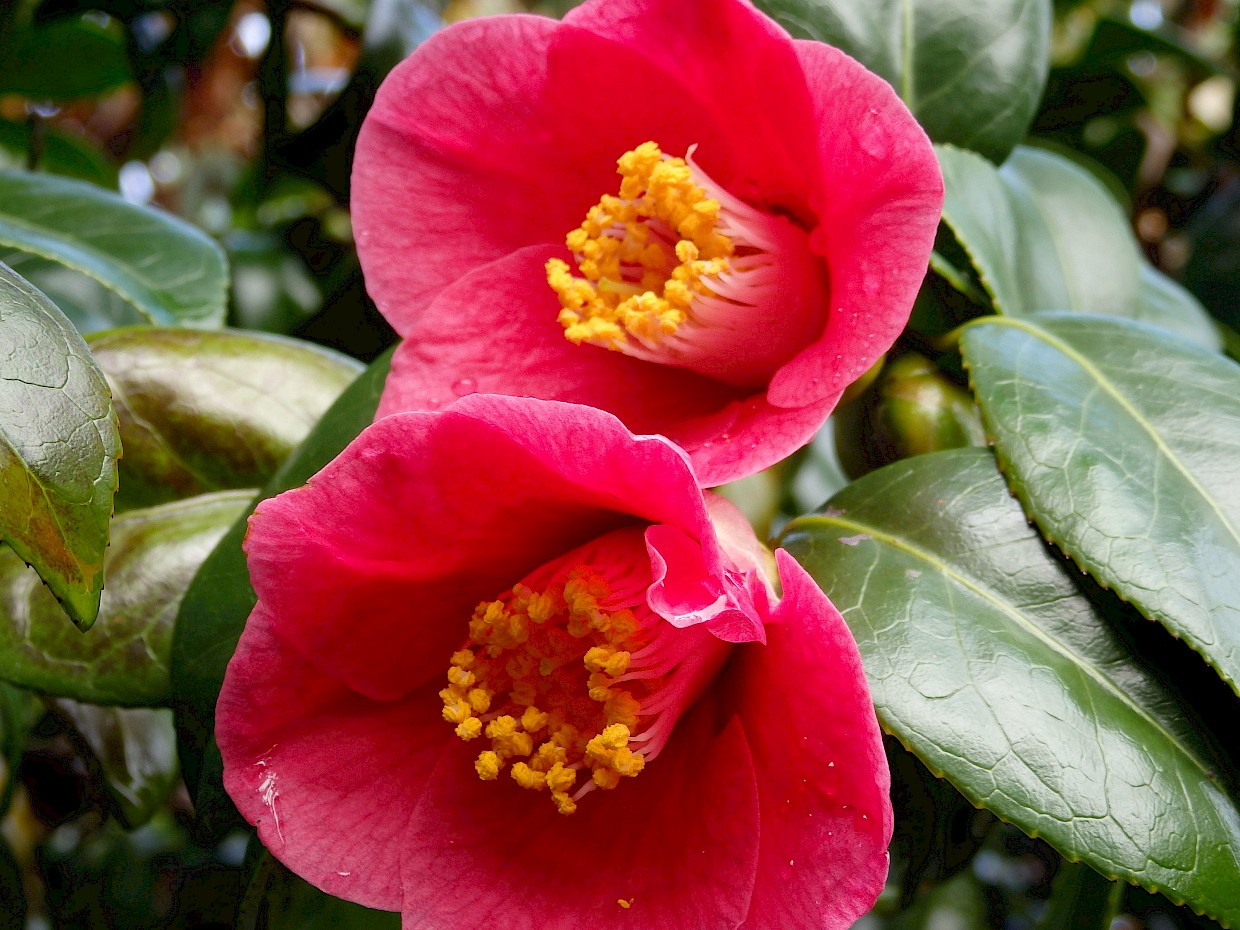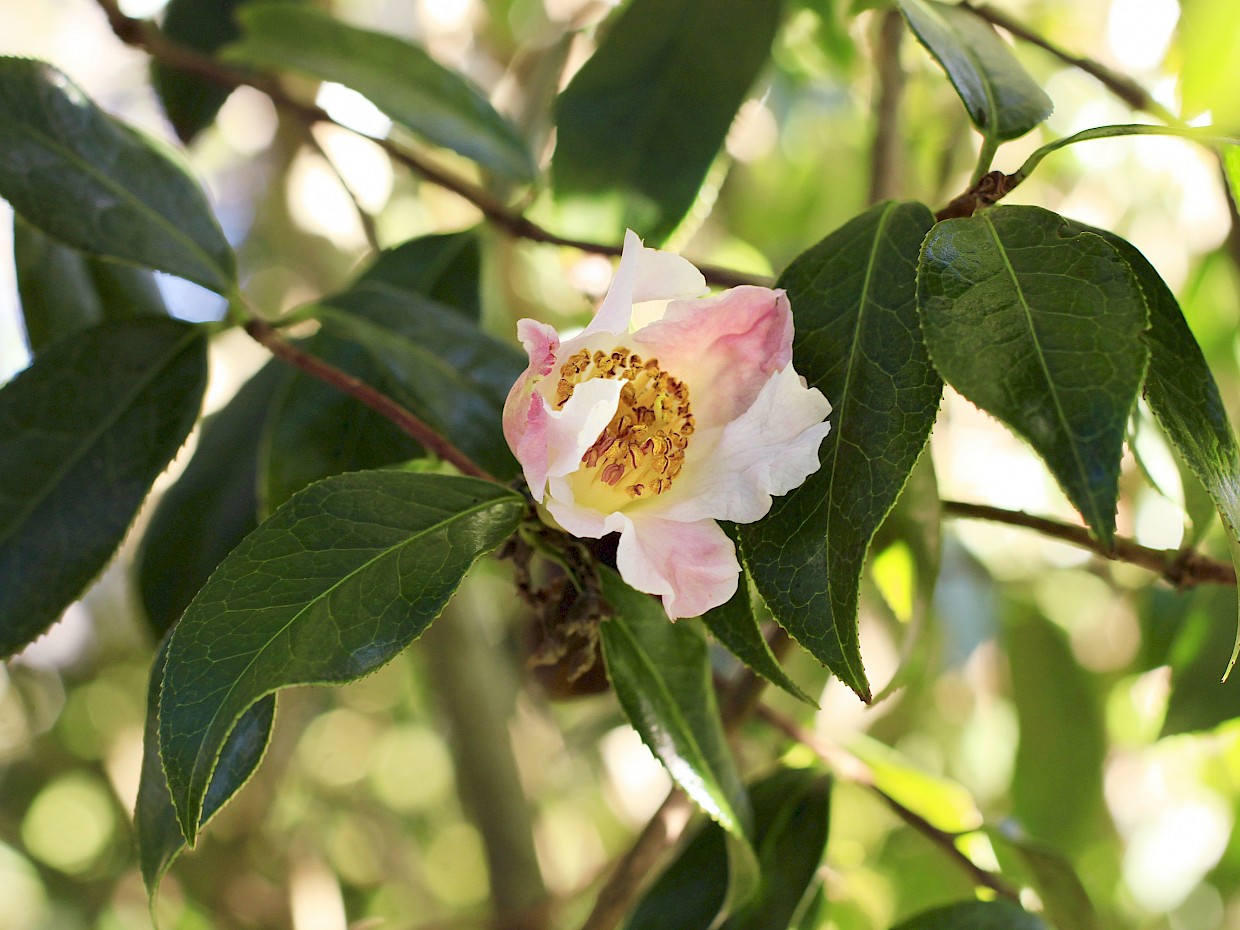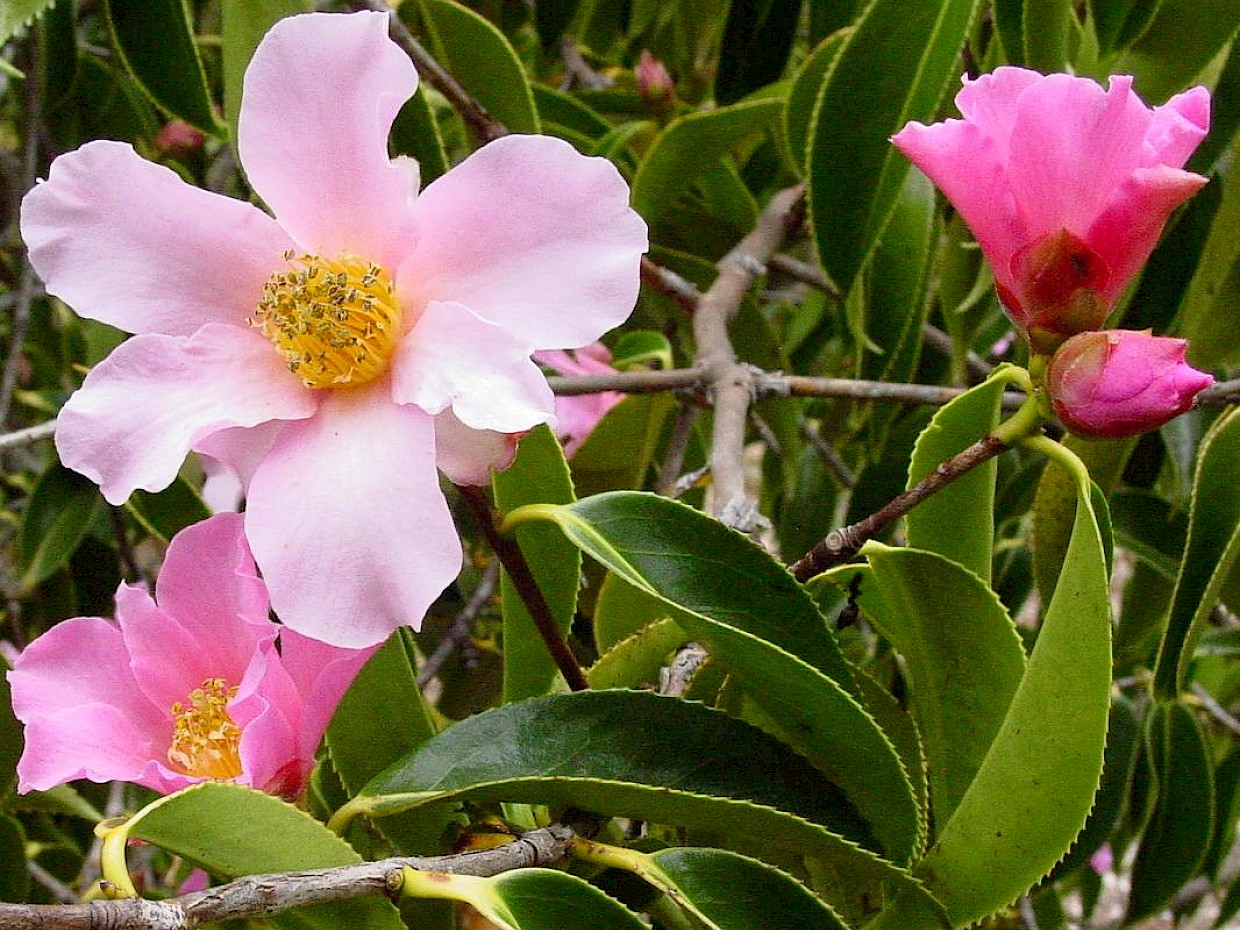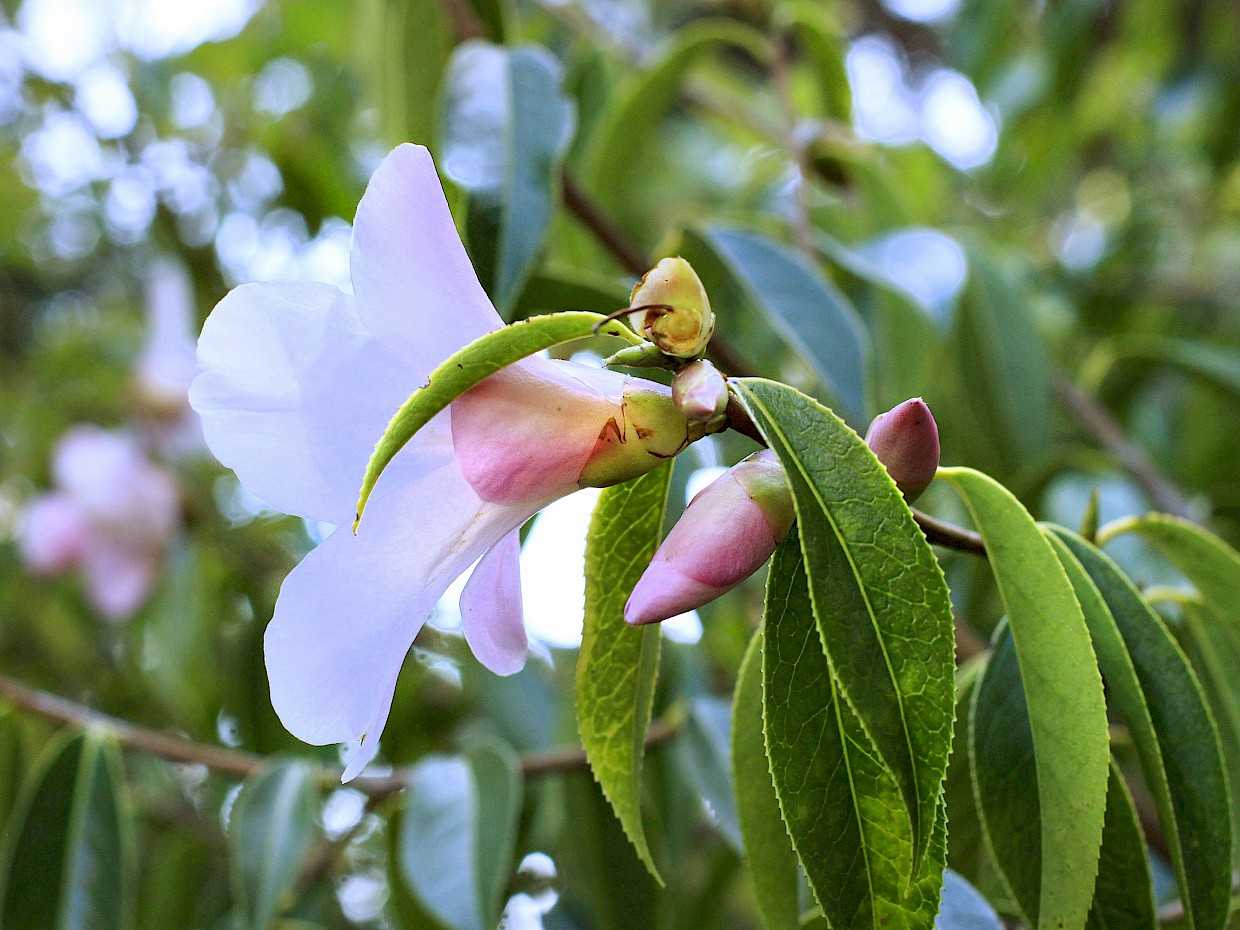Camellia Collection
Typical bloom time: January through March
In 1985, the fledgling Camellia Collection was established at the Mendocino Coast Botanical Gardens, with more plants added in 1989 and 2003. The collection, located just west of the Perennial Garden at the junction of the North and South Trails, includes approximately 11 cultivars (some by renowned local grower, Dan Charvet), 49 taxa, and 38 species. In fact, Mendocino Coast Botanical Gardens has the largest species collection on the West Coast! Our collection is a part of the American Camellia Society's "Camellia Trail".
The camellia's foremost ornamental feature is showy flowers. There are around 250 species in the genus and more than 2,300 named cultivars. Blooms ranging from white or pink to deep red with forms as simple as a wild rose, or with multiple petals such as a peony has.
Most camellias used in landscapes are cultivars of Camellia japonica. At MCBG, most of our hybrids have Camellia reticulata parentage because they seem to do better in this cimate. Their lovely flowers, appearing in late fall to early spring, and deep green glossy leaves make them a garden favorite. They are among the most popular evergreen shrubs for foundation landscaping in shady places around homes and for planting in mixed gardens with azaleas and ferns. As understory plants, they grow well under Douglas fir, redwood, and oaks. The taller trees provide protection from the elements and a greenhouse effect to help keep the camellia's roots healthy and warm. Camellias thrive and bloom best when sheltered from full sun and drying winds. They appreciate cool winters, lightly acid soil rich with organic matter, and excellent water drainage, which mimic the forest locations where they were first discovered. Camellias are particularly well adapted to the climate and soils of the Mendocino Coast.
DID YOU KNOW that whenever you sip a cup of tea, you are enjoying camellias? Camellia sinensis is used to make white tea, yellow tea, green tea, oolong, pu-erh tea, and black tea!
Camellia Collection Plant List
To see more photos of our Camellia Collection, visit the Photo Gallery.
Next: Conifer Collection »

